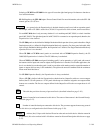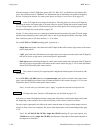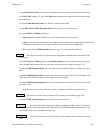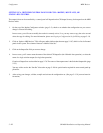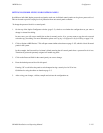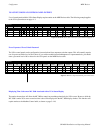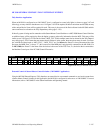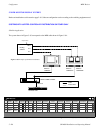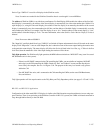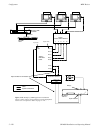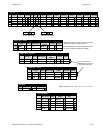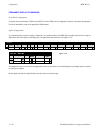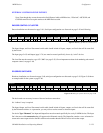Configurator
MPK Devices
5−117CM 4000 Installation and Operating Manual
Device Type “UMD3A” is used for all displays in the SlimLine series.
Note: No entries are needed for the SlimLine Controller chassis even though it is on an MPK bus.
The address of SlimLine UMDs is set with front−panel buttons. For Dual Display (DD) models, the address of the first (left−
hand) display is set manually; the address of the second display is automatically set to the same number plus 100 hex. For
triple displays (i.e., using the Universal Display), the address of the first display is set manually; the address of the second
display is automatically set to the same number plus 100 hex; and the address of the third display is automatically set to the
same number plus 200 hex. For example, if the first display is set to “AA,” then the address of the second display is “1AA”
and the address of the third display is “2AA.” For more information, refer to the SlimLine Under Monitor Displays Technical
Manual.
Note: Do not use address 00000011.
The “Input Set” specified should be of type “UMD3A” and include all inputs and mnemonics that will be used on the status
display. Each “Output Set” is not an actual Output Set, but is rather the name of the router output feeding the monitor next
to the particular status display. The status display will follow the first level listed in the Level Set, e.g., if Video is the first
level listed, then the mnemonic of the video input feeding the monitor will be shown.
Tally light operation. For SlimLine tally light operation, the MPK table must include an “MI 3040/T” entry (even if no actual
MI 3040 hardware is in the system):
— If there is no MI 3040/T connected to the CM controlling the UMDs, you must define an imaginary MI 3040T
and assign it to the CM controlling the UMDs. Entries for “Port” and “Address” are not used but must be pres-
ent to satisfy the compiler. See row 4 of Figure 5−94. The purpose of this entry is to launch a tally process
within the CM.
— If an MI 3040/T does exist, and is connected to the CM controlling the UMDs, use the actual CM Board name,
Port, and Address.
Tally light operation will also require entries to the Tally Relay and Tally Dependency tables (see pages 5−152 and 5−158).
RP 1/2/3 and RP 1/2/3 C Applications
Configuration of the older model RP 1/2/3 displays is similar to the SlimLine units except that address(es) are set using rear−
panel switches. There is no equivalent to the SlimLine Controller in RP 1/2/3 systems; the UMDs are instead connected in
loop−through fashion directly to the CM 4000.



